From The Chronicle of Higher Education:
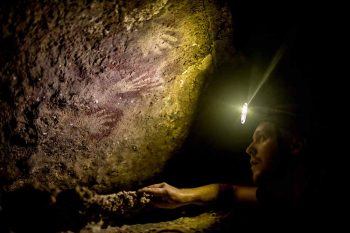 For years, archaeologists thought Europe was the site of the first creative impulses, with famous cave drawings like those at Chauvet, France, putting humans’ innate artistic expression on display. Only in the past decade has that assumption begun to shift, and thanks in large part to the explorations of researchers from the Australian Research Centre for Human Evolution (ARCHE) at Griffith University in Queensland, Australia.
For years, archaeologists thought Europe was the site of the first creative impulses, with famous cave drawings like those at Chauvet, France, putting humans’ innate artistic expression on display. Only in the past decade has that assumption begun to shift, and thanks in large part to the explorations of researchers from the Australian Research Centre for Human Evolution (ARCHE) at Griffith University in Queensland, Australia.
Shortly after completing his Ph.D., Maxime Aubert heard about undated cave art on the Indonesian island of Sulawesi and his curiosity was piqued. Using uranium-series dating, a technique that had not been applied to the paintings before, Aubert — who is now a Professor of archaeological science at Griffith University and researcher both at ARCHE and at the Griffith Centre for Social and Cultural Research — showed that images on the walls and ceilings of the caves had been there for almost 40,000 years, making them at least as ancient as those in Europe, if not even older. The resulting article — published in Nature in 2014 — took the world by storm. Science magazine ranked the research among the top ten discoveries of that year, and noted that it, “could rewrite the history of a key stage in the development of the human mind.” The finding turned the previous theory that human creativity had originated in Europe on its head.
“Essentially they were saying that when humans left Africa they didn’t become collectively modern until they reached Europe — which is not true. We killed that idea,” Aubert says. “It’s more likely that when modern humans left Africa maybe 100,000 years ago they were fully modern.”
More here.

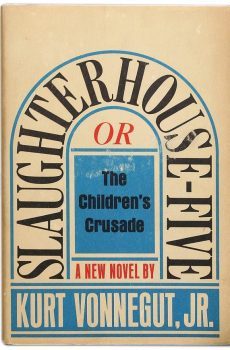 There is an eminently useful thought experiment with which I suspect you are familiar. It goes something like, “What would an alien think of ____?” The blank is typically filled in with something like sex, or our destructive relationship to the natural world, or money. War is sometimes used to fill that blank, too. The point of the thought experiment is to invent a kind of critical distance between a particular aspect of human behavior and ourselves, the ones behaving un-self-consciously like humans. This thought experiment is useful precisely because it forces a perspective so separate, or alien, that with a little luck we gain some insight into why we are the way we are or why we do the things we do, like procreate, or poison our habitat, or hoard digital proxies for paper proxies for bits of rare but not all that rare metals, or watch old people get machine-gunned to death, or firebomb medium-size German cities. I’ve often thought that “Slaughterhouse-Five” is a variation on this kind of thought experiment; it has few if any equals in creating the kind of distance that can offer insight into the mass insanity of modern warfare.
There is an eminently useful thought experiment with which I suspect you are familiar. It goes something like, “What would an alien think of ____?” The blank is typically filled in with something like sex, or our destructive relationship to the natural world, or money. War is sometimes used to fill that blank, too. The point of the thought experiment is to invent a kind of critical distance between a particular aspect of human behavior and ourselves, the ones behaving un-self-consciously like humans. This thought experiment is useful precisely because it forces a perspective so separate, or alien, that with a little luck we gain some insight into why we are the way we are or why we do the things we do, like procreate, or poison our habitat, or hoard digital proxies for paper proxies for bits of rare but not all that rare metals, or watch old people get machine-gunned to death, or firebomb medium-size German cities. I’ve often thought that “Slaughterhouse-Five” is a variation on this kind of thought experiment; it has few if any equals in creating the kind of distance that can offer insight into the mass insanity of modern warfare.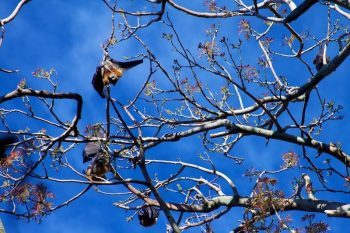 In ancient Rome, priests and officials called augurs would look for omens of the future in the weather, the movement of animals (especially animals encountered out of place), or the flights of birds. These days, we’re scrutinising the same things to tell the future, not as signs of the gods’ will but our own actions.
In ancient Rome, priests and officials called augurs would look for omens of the future in the weather, the movement of animals (especially animals encountered out of place), or the flights of birds. These days, we’re scrutinising the same things to tell the future, not as signs of the gods’ will but our own actions.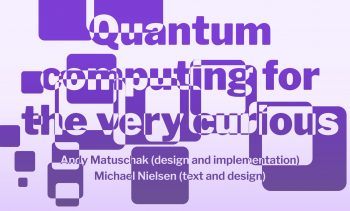 It’s not a survey essay, or a popularization based on hand-wavy analogies. We’re going to dig down deep so you understand the details of quantum computing. Along the way, we’ll also learn the basic principles of quantum mechanics, since those are required to understand quantum computation.
It’s not a survey essay, or a popularization based on hand-wavy analogies. We’re going to dig down deep so you understand the details of quantum computing. Along the way, we’ll also learn the basic principles of quantum mechanics, since those are required to understand quantum computation. It is reasonable that we would want to cast such an attack outside the realm of rationality, to tell ourselves that expressions of evil are random and unpredictable; it’s the same impulse many had when faced with the brutality and terror of the Islamic State and other jihadi extremists. To rationalize evil as something irrational makes it easier to take on horrifying news. But to do that here would be a mistake.
It is reasonable that we would want to cast such an attack outside the realm of rationality, to tell ourselves that expressions of evil are random and unpredictable; it’s the same impulse many had when faced with the brutality and terror of the Islamic State and other jihadi extremists. To rationalize evil as something irrational makes it easier to take on horrifying news. But to do that here would be a mistake. Schneemann: We would go mushroom hunting with him. And Higgins made these incredible mushroom dinners, right? They made you poop like crazy, but they were delicious. And John was very close with Tenney. Tenney produced Cage’s concerts early on, while nobody was supporting us or helping us. He was forming a group called Tone Roads at the time with Malcolm Goldstein and Philip Corner, and Phil Glass and Steve Reich were participants. I always cherished time with Jim and John talking about sound and natural formulations, but we were divisive on politics. John didn’t want to have conflict, it was his defining position. He didn’t discourage us from going to anti-Vietnam war marches, but he wouldn’t join in any way. We loved him. He was generous, spirited, engaging.
Schneemann: We would go mushroom hunting with him. And Higgins made these incredible mushroom dinners, right? They made you poop like crazy, but they were delicious. And John was very close with Tenney. Tenney produced Cage’s concerts early on, while nobody was supporting us or helping us. He was forming a group called Tone Roads at the time with Malcolm Goldstein and Philip Corner, and Phil Glass and Steve Reich were participants. I always cherished time with Jim and John talking about sound and natural formulations, but we were divisive on politics. John didn’t want to have conflict, it was his defining position. He didn’t discourage us from going to anti-Vietnam war marches, but he wouldn’t join in any way. We loved him. He was generous, spirited, engaging. O
O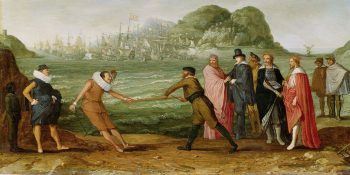 Giano’s killing was one episode in the larger story of international trade and its accompanying rivalries in the later European Middle Ages. The so-called Dark Ages were never as dark as their name would imply; hucksters, peddlers, chapmen, and other minor players had always plied Europe’s roads and dealt their goods. But it was in the fourteenth and fifteenth centuries that high-volume international trading seriously resumed, with trade in wool one of its major drivers. In those centuries, the Port of London alone handled almost a thousand arriving and departing trading vessels a year, and numerous other English ports (including the newly active ports of Dover and Southampton) were claiming a role. Half this activity was devoted to wool, and it generated immense wealth for the realm, conferring fortunes on a small and monopolistic group of men. These successful profiteers were not the sheepherders and shearers of the provinces, nor the merchant sailors who braved the seas, but the entrepreneurial middlemen who collected revenues on exported wool. A close-knit group of at most several hundred men, they formed allegiances and confederations throughout the mercantile establishment that dominated the leading guilds and ran the city of London.
Giano’s killing was one episode in the larger story of international trade and its accompanying rivalries in the later European Middle Ages. The so-called Dark Ages were never as dark as their name would imply; hucksters, peddlers, chapmen, and other minor players had always plied Europe’s roads and dealt their goods. But it was in the fourteenth and fifteenth centuries that high-volume international trading seriously resumed, with trade in wool one of its major drivers. In those centuries, the Port of London alone handled almost a thousand arriving and departing trading vessels a year, and numerous other English ports (including the newly active ports of Dover and Southampton) were claiming a role. Half this activity was devoted to wool, and it generated immense wealth for the realm, conferring fortunes on a small and monopolistic group of men. These successful profiteers were not the sheepherders and shearers of the provinces, nor the merchant sailors who braved the seas, but the entrepreneurial middlemen who collected revenues on exported wool. A close-knit group of at most several hundred men, they formed allegiances and confederations throughout the mercantile establishment that dominated the leading guilds and ran the city of London.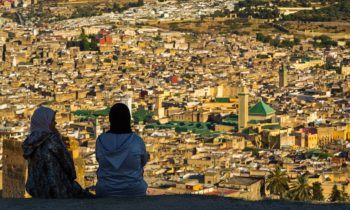 Outside the window of Tim Mackintosh-Smith’s home in Sana’a, the Yemeni capital, are reminders of the long sweep of Arab history – child soldiers mourning martyrs of the country’s ongoing war, rocket salvoes,
Outside the window of Tim Mackintosh-Smith’s home in Sana’a, the Yemeni capital, are reminders of the long sweep of Arab history – child soldiers mourning martyrs of the country’s ongoing war, rocket salvoes, 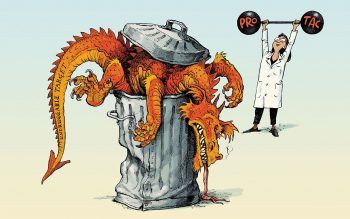 When Craig Crews first managed to make proteins disappear on command with a bizarre new compound, the biochemist says that he considered it a “parlour trick”, a “cute chemical curiosity”. Today, that cute trick is driving billions of US dollars in investment from pharmaceutical companies such as Roche, Pfizer, Merck, Novartis and GlaxoSmithKline. “I think you can infer that pretty much every company has programmes in this area,” says Raymond Deshaies, senior vice-president of global research at Amgen in Thousand Oaks, California, and one of Crews’s early collaborators. The drug strategy, called targeted protein degradation, capitalizes on the cell’s natural system for clearing unwanted or damaged proteins. These protein degraders take many forms, but the type that is heading for clinical trials this year is one that Crews, based at Yale University in New Haven, Connecticut, has spent more than 20 years developing: proteolysis-targeting chimaeras, or PROTACs.
When Craig Crews first managed to make proteins disappear on command with a bizarre new compound, the biochemist says that he considered it a “parlour trick”, a “cute chemical curiosity”. Today, that cute trick is driving billions of US dollars in investment from pharmaceutical companies such as Roche, Pfizer, Merck, Novartis and GlaxoSmithKline. “I think you can infer that pretty much every company has programmes in this area,” says Raymond Deshaies, senior vice-president of global research at Amgen in Thousand Oaks, California, and one of Crews’s early collaborators. The drug strategy, called targeted protein degradation, capitalizes on the cell’s natural system for clearing unwanted or damaged proteins. These protein degraders take many forms, but the type that is heading for clinical trials this year is one that Crews, based at Yale University in New Haven, Connecticut, has spent more than 20 years developing: proteolysis-targeting chimaeras, or PROTACs.
 I stopped listening to music and watching TV in my 20s. It sounds extreme, but I did it because I thought they would just distract me from thinking about software. That blackout period lasted only about five years, and these days I’m a huge fan of TV shows like Narcos and listen to a lot of U2, Willie Nelson, and the Beatles.
I stopped listening to music and watching TV in my 20s. It sounds extreme, but I did it because I thought they would just distract me from thinking about software. That blackout period lasted only about five years, and these days I’m a huge fan of TV shows like Narcos and listen to a lot of U2, Willie Nelson, and the Beatles. In February, Time Out Dubai ecstatically
In February, Time Out Dubai ecstatically  Despite the spread of secularism in the West, rising levels of religious belief in the world as a whole have become incontrovertible. Three-quarters of humanity profess a faith; the figure is projected to reach 80 per cent by 2050 – not just because believers tend to have more children, but also through the spread of democracy. Significant, too, is the growing prominence of post-secular thinking in several disciplines. Things looked very different as recently as the 1980s. Influential commentators assumed that mainstream religion would fade away within a few generations; anglophone theologians, to name only one group, were often intellectually insecure. The turning of the tide is a significant chapter in the history of ideas meriting a full-length study of its own. Its main conclusions are worth outlining. The scales of debate on whether religion does more harm than good will tilt a bit if the theistic picture looks more coherent on closer inspection than many had previously thought, and naturalism – the thesis that everything is ultimately explicable in the language of natural science – less plausible as a consequence.
Despite the spread of secularism in the West, rising levels of religious belief in the world as a whole have become incontrovertible. Three-quarters of humanity profess a faith; the figure is projected to reach 80 per cent by 2050 – not just because believers tend to have more children, but also through the spread of democracy. Significant, too, is the growing prominence of post-secular thinking in several disciplines. Things looked very different as recently as the 1980s. Influential commentators assumed that mainstream religion would fade away within a few generations; anglophone theologians, to name only one group, were often intellectually insecure. The turning of the tide is a significant chapter in the history of ideas meriting a full-length study of its own. Its main conclusions are worth outlining. The scales of debate on whether religion does more harm than good will tilt a bit if the theistic picture looks more coherent on closer inspection than many had previously thought, and naturalism – the thesis that everything is ultimately explicable in the language of natural science – less plausible as a consequence. No composer exerted a greater influence on the music that came after him than Johann Sebastian Bach, who was born on this date in 1685. As we celebrate his birthday, let us consider one distinctive way in which composers have paid homage to the master: by using Bach’s name itself as a musical motif. In German nomenclature, the note (and key of) B flat is represented by the letter B; B natural is represented by the letter H. A and C are just as they are, so to spell out Bach’s surname in musical form yields a four-note motif consisting of B flat, A, C, and B. Bach himself used the motif (a kind of autograph stamp, sometimes surreptitious, sometimes not), and many others followed his lead: Robert Schumann, Franz Liszt, Max Reger, Arnold Schoenberg, Francis Poulenc, Anton Webern, Arvo Pärt, Krzysztof Penderecki, and Alfred Schnittke among them. One of the most imaginative uses of the motif came from a composer who is too often overlooked by music critics but who happened to be one of the most innovative and arresting voices in 20th-century music, Bruno Maderna.
No composer exerted a greater influence on the music that came after him than Johann Sebastian Bach, who was born on this date in 1685. As we celebrate his birthday, let us consider one distinctive way in which composers have paid homage to the master: by using Bach’s name itself as a musical motif. In German nomenclature, the note (and key of) B flat is represented by the letter B; B natural is represented by the letter H. A and C are just as they are, so to spell out Bach’s surname in musical form yields a four-note motif consisting of B flat, A, C, and B. Bach himself used the motif (a kind of autograph stamp, sometimes surreptitious, sometimes not), and many others followed his lead: Robert Schumann, Franz Liszt, Max Reger, Arnold Schoenberg, Francis Poulenc, Anton Webern, Arvo Pärt, Krzysztof Penderecki, and Alfred Schnittke among them. One of the most imaginative uses of the motif came from a composer who is too often overlooked by music critics but who happened to be one of the most innovative and arresting voices in 20th-century music, Bruno Maderna. Okwui’s art world looked more like the world itself. But this was no occasion for self-congratulation, much less for exercises in the sterile American rhetoric of ‘inclusion’, which he disdained. His project was to decolonise the art world: not to make it more ‘diverse’ but to redistribute power inside it.
Okwui’s art world looked more like the world itself. But this was no occasion for self-congratulation, much less for exercises in the sterile American rhetoric of ‘inclusion’, which he disdained. His project was to decolonise the art world: not to make it more ‘diverse’ but to redistribute power inside it.